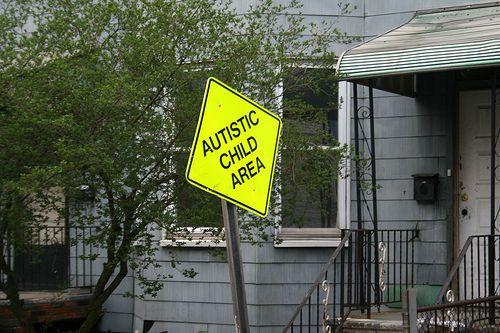Oxytocin And Autism: How The ‘Love Hormone’ Temporarily Improves Brain Function In Children

A single dose of oxytocin – commonly known as the" love hormone" – delivered via nasal spray, has improved brain function among children with autism who display deficits in processing social information, according to a new Yale University study.
As a neurodevelopmental disorder, autism is most often characterized by a person’s inability to read discreet social cues, either verbally or through body language. Introducing oxytocin, a hormone that occurs naturally in the body and is responsible for social recognition, anxiety, and more colloquially, love, temporarily improved the brain function of children with autism, making them perform better on tests of social awareness.
"This is the first study to evaluate the impact of oxytocin on brain function in children with autism spectrum disorders," lead author Dr. Ilanit Gordon, a Yale Child Study Center postdoctoral fellow, said in a statement. "We found that brain centers associated with reward and emotion recognition responded more during social tasks when children received oxytocin instead of the placebo.” Effects lasted between two to four hours, with no side-effects having been observed, although Gordon said the low, non-chronic administration may have impacted that result.
Gordon and her colleagues have been testing oxytocin nasal sprays as a means for relieving autism for over a year as a part of the Child Study Center’s long-term study. The 17 children in the randomized, double-blind study ranged from 8 to 16.5 years old. All had some form of autism spectrum disorder.
Oxytocin is secreted by the brain’s pituitary gland. It’s often referred to as the love hormone because of its unique and robust role in modulating sexual activity and feelings of intimacy. It’s released in large quantities in mothers’ brains just after giving birth, facilitating the newly formed bond between a woman and her child. Recent studies have found oxytocin to keep men monogamous in their relationships – owing to its pair bonding roles – but it’s also found to contribute to fear and anxiety.
In the present study, Gordon said the hormone’s introduction regulated brain functions to more closely resemble the average person’s brain. "Oxytocin temporarily normalized brain regions responsible for the social deficits seen in children with autism,” she explained, adding that the hormone facilitated social attunement, a process that makes the brain regions involved with social recognition light up when presented with social stimuli (such as faces) but less so for nonsocial stimuli (such as cars).
Autism spectrum disorder (ASD) diagnoses have grown in prevalence at an astonishing rate over the last decade, according to figures from the Centers for Disease Control and Prevention (CDC). In 2000, roughly one in 150 children had received a diagnosis. By 2008, that rate had increased to one in 88. ASDs are nearly five times more common in boys than in girls (one in 54 vs. one in 252). Gordon said that the key task in unearthing oxytocin’s role stems from decreasing ages of diagnosis and age of first treatment, particularly in the face of research investigating adult cases of autism where oxytocin has also shown effectiveness.
“We are thinking that oxytocin can modulate or impact behavior in ASD, and now we know more about the brain basis to oxytocin administration specifically in kids with ASD,” Gordon said. Whether neuropharmacology is the appropriate foundation for treatment, she added, depends on how effective it would be as part of a tag team with behavioral therapies. “We are thinking the next steps in research should definitely be to give it just prior to behavioral treatments as a potential enhancer of outcomes,” Gordon said, “as a way of building upon the impact it can have on the brain while it's having that impact.”



























